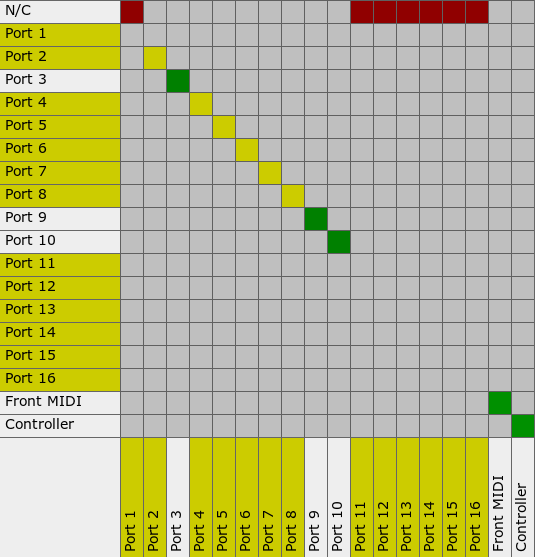Routing → MIDI Matrix
The device can embed MIDI data in the MADI stream using the user bits of channel 56. Embedded MIDI data is de-embedded in the device and can be routed separately from the audio data.
Note: If you have no MIDI routing active for an output port, but a routing on audio channel 56, the user bits will be routed as well (without being de-embedded and re-embedded in that case). But if you use the de-embedding and re-embedding process, you can route MIDI data between ports that are not synchronous.
Note: In order to be able to transport the 31250 MIDI bits/s on a MADI stream, there is a lower bound for the word clock of that MADI stream (since it can only transport one bit per sample). MIDI routing is not possible if the clock is lower than 32kHz. Ports that have a lower clock are hilighted in yellow to warn you. Of course it is possible to make the connection anyway, if you wish to do so.
To make a connection between an input port (rows) to an output port (columns), just click in the square that intersects both. If you press on the same square again, you can toggle between the N/C and connected state.
Note: You may notice a lag in the 100ms range between clicking on the matrix and the connection to show up. The matrix always shows the state inside the router and the transfer forth and back takes about this time. On the plus side, you always see what is going on inside the device.

In this image you can see that only ports 3, 9 and 10 carry signals that allow you to embed MIDI data correctly. Although you can make connections on the other ports (yellow squares), the data output will be garbled.
Above the matrix you have a small toolbar: